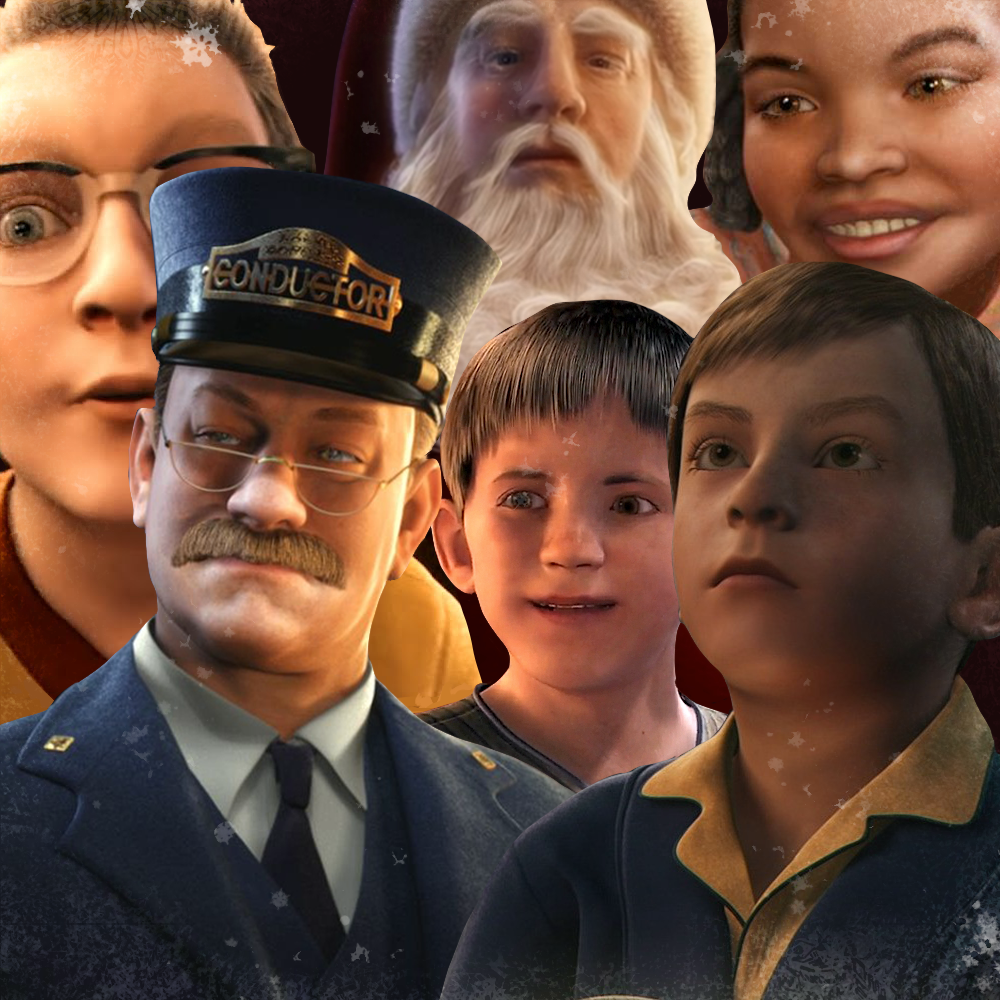Please visit response.fsu.edu for official FSU updates and resources.
Capturing the Magic of The Polar Express

Anyone raised in the early 2000s will recognize 2004’s The Polar Express as a defining part of the holiday experience when we were kids. The animated classic captured our imaginations by bringing the iconic story and illustrations of the book to life before our eyes. But beyond its place in our childhoods, The Polar Express represents a fascinating period in the history of animation in Hollywood. Despite using the predominant medium of computer animation, its visuals stood out from the other popular animated films released at the time. Unlike the works of Pixar and DreamWorks The Polar Express’ character animation strove for a near-photorealistic quality, prioritizing detailed faces and believable expressions over the exaggerated, cartoony style preferred by the other studios.
This creative choice was the result of a dilemma that director Robert Zemeckis faced very early in production. When author and illustrator Chris Van Allsburg sold the rights to the original book, he did so under the condition that the film adaptation would be done in live action rather than animation. This was troubling for Zemeckis, who wanted to faithfully recreate the book’s vibrant illustrations but felt that doing so in live action would put the project far over-budget. In order to preserve the visual style, which he believed was necessary to do the story justice, Zemeckis worked with VFX studio Sony Imageworks to develop an advanced method of filming via motion-capture technology.
Motion capture, also called performance capture, is an animation technique in which an actor’s movements are recorded and sampled onto a 3-Dimensional digital object with computer technology. Cameras pick up on the actor’s movements by tracking several small markers placed on specific points on their face and body. That movement data can then be applied to a 3-D figure, effectively allowing that actor’s performance to be reflected on any digital character, down to the most subtle details of their facial expression. Earlier films used performance capture in revolutionary ways to create characters like Gollum, played by Andy Serkis in 2002’s The Lord of the Rings: The Two Towers. However, when The Polar Express began filming in 2003, it would take an even more ambitious approach to utilizing the technology, opting to have every character on screen portrayed using performance capture.
Having directed several innovative effects films, like Back to the Future and Who Framed Roger Rabbit?, Zemeckis naturally took full advantage of the possibilities introduced by performance capture. While actor Tom Hanks initially expressed interest in playing two roles (Santa Claus and the Conductor), he would ultimately play five characters in the film (and Zemeckis has commented that Hanks could have played even more if he wanted). Another major benefit of performance capture that The Polar Express enjoyed is the freedom of camera movement allowed by each scene taking place in digital space as opposed to physical sets. This resulted in the wild, dynamic cinematography that frames the movie’s most kinetic sequences, something that would have been incredibly difficult, if not impossible, in live action.
However, not everyone in 2004 was won over by the film’s visuals. Many audience members found the semi-realistic characters to be creepy and unpleasant to look at (the result of an issue in aesthetics known as the “uncanny valley”). This was in stark contrast to Pixar’s The Incredibles, whose charming, stylized character designs won over audiences worldwide that same year. While some critics felt that the technology used in The Polar Express simply hadn’t advanced to the point where its characters to looked realistic enough to escape the uncanny valley, others believed that performance capture altogether wasn’t suitable to build an entire feature film around. Some even feared the technology, worrying that performance capture would replace the need for live action actors entirely.
While that last scenario obviously never played out, performance capture tech would only continue to evolve as time went on. Massive blockbusters like 2009’s Avatar and 2018’s Avengers: Infinity War made heavy use of it to allow fantastic characters to seamlessly share the screen with real humans. Today, hugely popular video games often incorporate performance captured characters into their interactive worlds, and even sometimes use 3-D scans of actors to make their characters resemble their real-life appearance (as was the case with Norman Reedus for his role in 2019’s Death Stranding).
Following The Polar Express, Zemeckis’s production company continued to make motion capture films like Monster House and Beowulf. In 2007, they formed a joint venture with Disney under the name ImageMovers Digital, through which they were meant to continue to produce similarly animated movies. Ultimately, they only released two films before being shut down, with the box-office bomb Mars Needs Moms being the last fully motion captured project the studio would make.
While performance capture continues to thrive as a tool for VFX artists, the era of completely performance captured animations in the style of The Polar Express appears to be long gone. Whether Zemeckis’s devotion to the tech was a worthwhile venture to create visually unique features, or just an attempt to chase a trend that was doomed to fail, is up to debate. If nothing else, however, The Polar Express continues to stand as a fascinating experiment as well as a comforting holiday flick (best enjoyed with a cup of hot chocolate).
The Polar Express will be playing at the ASLC on 12/3 at midnight.
Written by: Yanni Spanolios | Instagram
Art by: Cassidy Elibol



